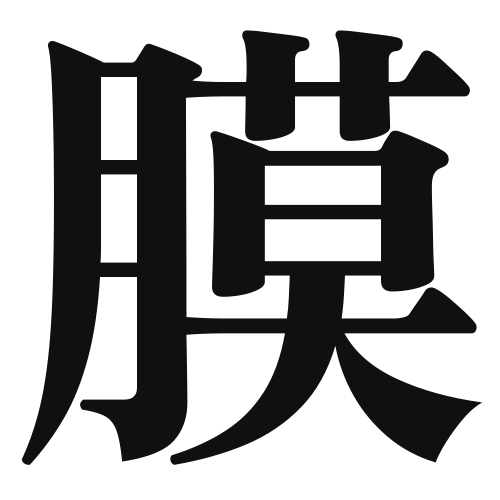1. Overview of Meaning
The kanji “膜” (maku) means “membrane” or “film.” It refers to a thin layer or covering that can be found in biological contexts, such as cell membranes, or in other contexts like coatings or films.
2. Formation and Radical
Formation of the Kanji: The kanji “膜” is a compound character (会意文字) that combines two elements: the radical “肉” (meaning “meat” or “flesh”) and “莫,” which contributes to the overall meaning of a thin layer or covering.
Radical: The radical of “膜” is “肉,” which often relates to things that are fleshy or soft, reinforcing the idea of a thin, flexible layer.
3. Examples of Usage
Common Words and Phrases: Some frequently used words that include “膜” are:
- 細胞膜 (さいぼうまく, saibou maku) – cell membrane
- 薄膜 (はくまく, hakumaku) – thin film
Example Sentences in Daily Conversation:
- この細胞膜は細胞を保護しています。 (このさいぼうまくはさいぼうをほごしています。) – This cell membrane protects the cell.
- 薄膜技術は新しい材料の開発に役立っています。 (はくまくぎじゅつはあたらしいざいりょうのかいはつにやくだっています。) – Thin film technology is useful in the development of new materials.
4. Synonyms and Antonyms
Similar Kanji: A similar kanji is “皮” (かわ, kawa), which means “skin” or “peel.” While both refer to protective layers, “膜” typically refers to a more delicate or thin layer, whereas “皮” can refer to thicker coverings.
Antonyms: An antonym could be “空” (そら, sora), meaning “empty” or “void,” as it represents the absence of a covering or layer.
5. Cultural and Historical Background
Relation to Japanese Culture: In Japanese culture, the concept of “膜” can be seen in various traditional practices, such as the use of thin layers in food preparation, like in sushi or delicate pastries.
Proverbs and Idioms: There are not many specific proverbs that directly use “膜,” but the idea of layers and coverings can be metaphorically related to concepts of protection and boundaries in various sayings.
